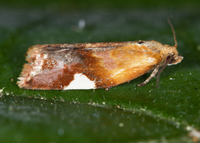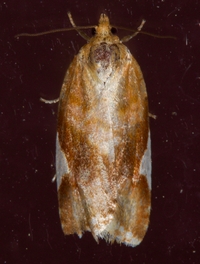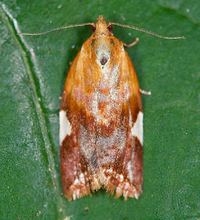| Larval Host Plants: The larvae are highly polyphagous and feed on a taxonomically diverse group of plants that include conifers, hardwood trees and shrubs, grasses, and herbs (MacKay, 1962; Powell, 1964; Prentice, 1966; Chapman and Lienk, 1971; Ferguson, 1975; Powell and De Benedictis, 1996; Robinson et al., 2010; Gilligan and Epstein, 2014). The reported hosts include Balsam Fir (Abies balsamea) and other firs, Box-elder (Acer negundo) and other maples, alders (Alnus), serviceberries (Amelanchier), asters (Aster), English Daisy (Bellis perennis), birches (Betula), Ceanothus, Sweet-fern (Comptonia peregrina), hazelnuts (Corylus), American Beech (Fagus grandifolia), strawberries (Fragaria), ashes (Fraxinus), larches (Larix), Canada Mayflower (Maianthemum canadense), apples (Malus domestica), American Hop-hornbeam (Ostrya virginiana), Common Timothy (Phleum pratense), spruces (Picea), smartweeds (Polygonum), Mayapple (Podophyllum peltatum, Balsam Poplar (Populus balsamifera), Quaking Aspen (P. tremuloides), cherries and peaches (Prunus), Choke Cherry (P. virginiana), Douglas fir (Pseudotsuga menziesii), buttercups (Ranunculus), Raphanus, gooseberries (Ribes), roses (Rosa), brambles (Rubus), Sheep Sorrel (Rumex acetosella) and elms (Ulmus). - View |

 »
»




 »
»


